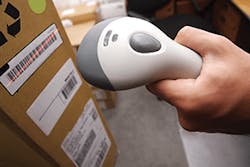XO’s Supply Chain Journey
Lessons From a Cross-Country Bike Challenge
It was a typical gloomy day in Seattle, Washington, and Yvonne Sabatini was excited, nervous, and full of excitement. She was going to attempt an incredible accomplishment she had dreamed, schemed, and planned for: biking across the United States.
She dipped her back tire into the Pacific Ocean, focused her mind, flexed her muscles, and took the first pedal towards her seemingly impossible goal. She quickly crossed the Emerald City and found her groove, setting a pace that her inexperienced legs could handle. Soon the iconic Space Needle was out of sight, and the city gave way to suburbs, which then gave way to breathtaking mountains. Day 1 went by slowly with no conversation, and often no sight of another cyclist.
On Day 2, she reached the top of Stevens Pass at 4,061 feet. This climb through the Cascade Mountains was the first thrill of the trip, with amazing views and raging waters on the left side of the ascent.
The weather was unrelenting, even in mid-June. Even with full rain gear on she was freezing. It was the first of hundreds of sudden changes in the environment she would experience. Dirt tornadoes were a common occurrence, as were surprise rain storms, hail storms, and more. The eastern half of Washington contrasted sharply with Seattle, yielding a brutal dry heat which required a change into shorts and a t-shirt.
Every day the environment threw everything it could at her, from thunderstorms to intense food poisoning. But she was prepared, followed the plan, and weathered through.
Reality Hits
On one particularly brutal day, the seemingly endless apple orchards became a blur, as fatigue set in with a vengeance. Starting to lag, she was quickly encouraged by a team of bikers who helped close out the last 20 miles, before finding her a cool stream to soothe her aching muscles in.
On the trail from Ashton, Idaho, to Yellowstone, she found winds so ferocious that she had to fight to even go downhill on a 6% grade. By the time she reached South Dakota, she had seen it all, and conquered it all. More than conquered, she had embraced, starting to believe she was going to go the distance.
She rode with a smile on her face from there on out. She enjoyed the Badlands, Devils Tower, Crazy Horse Memorial, Jewel Cave, Mount Rushmore, Niagara Falls, and countless other sights. It was an incredible journey — so much so that by the time she hit New York, she actually felt sad, as she could feel the end coming. She had been on the trail for 8 weeks, and all the craziness, friendly faces, and open road inexplicably started to feel like home. She was finally comfortable in the saddle, just before it was time to dismount.
The smooth rolling hills of New York were nothing compared to the jagged mountains in the west, and were no obstacle for her now-powerful legs. By the time she completed the last of the daunting 4,200 miles and dipped her front tire into the Atlantic, she was triumphant and celebratory.
Translation to Business
When Yvonne Sabatini took on the task of perfecting the XO Communications supply chain, she took it as far as to win the coveted Best of Class Award for Supply Chain. The only caveat the award came with was the need for Asset Lifecycle Management (ALM) to "complete the last mile". So Yvonne started a new journey: to implement ALM into the Supply Chain.
She could see a true comparison between her biking journey and the one she was starting at XO, but knew the stakes were much higher at XO due to their massive (and growing) critical infrastructure. With a 20,000-route mile national inter-city network, 1.2 million metro fiber miles, and more than 4,000 on-net buildings, XO provides extensive data services to business locations in North and South America, Europe, Africa, and Asia/Pacific regions.
According to the Gartner Group and PWCC Asset Management consulting best practices, a company that effectively and efficiently implements an asset management program including automation of this process can anticipate a saving of 15-20% of the Total Cost of ownership for those assets managed. A 15-20% CapEx and OpEx savings for XO meant a massive competitive advantage, as it allowed them to reallocate the savings to other revenue generating initiatives.
The goal of Yvonne’s supply chain management team was to create an Integrated ALM solution that would allow management and staff to use efficient and effective asset management techniques to reduce the total cost of ownership for their company while improving company productivity and supporting their customers.
The ALM they desired was the complete end-to-end management of network equipment through each of the many lifecycle stages, from cradle to grave. These stages include, among others: receipt of shipment, warehousing and spares management, picking and shipping, "minimum/maximum" settings, transfers, assembly, installation, deployment, maintenance, upgrades, repairs, returns, audits, cycle count, and decommissioning/disposal.
The team knew a complete solution takes ALM even farther, adding a mobile solution to provide accurate, real-time information that allows you to keep track of where every single asset is: across the field, warehouse, data center or back office.
ALM mobile solutions allow any field technician to collect the information needed when and where changes occur. These updates are captured in real time and communicated to the systems that rely on different types of asset information. Implementing initial planning, multiple-step processes could be configured for different types of users, ensuring intelligent, directed decision support and visibility into all inventory at every step, whether the field tech is offline or online. Intelligent decision support tools would allow them to see and control everything they need to accomplish their job, no matter what mobile platform you are using or where you are located.
XO needed a complete ALM solution to supplement their supply chain, including software, services, asset tags, and mobile hardware.
Telecommunication companies and communication service providers like XO stand to benefit from ALM more than most other industries, as they are pouring billions of dollars into above-ground networks to support their operational growth. This industry-wide CapEx number is an enormous problem for the bottom line, but is also a huge opportunity for improvement if the asset tracking problems are fixed.
The Nuts and Bolts
The problems Yvonne’s team faced were similar to those of other large carriers:
• They had a massive network infrastructure, with no accurate database to represent those assets.
• They had a complex warranty and repairs process, with a limited ability to provide asset information to process it efficiently.
• They were not maximizing their common language equipment identifier (CLEI) codes to keep real-time views into parts, revisions, and other pertinent hardware information.
• They experienced issues with sparing levels, hoarding, and more.
Before ALM, the solution involved time-consuming manual efforts and home-grown solutions to track returns, warranties, sparing and fixed assets, as there was also no mobile solution. Spares were handled by a third-party solution, and asset was in multiple (non-integrated) systems which required multiple different reporting solutions. Reconciliation was also manual and time-consuming, hurting their ability to have a real-time, accurate asset database of record.
Given the different potential areas for improvement, the business case for ALM inside their supply chain was obvious. The company needed to:
• Optimize CapEx and OpEx at every stage of the Asset Lifecycle.
• Track assets at a unique XO asset ID and manufacturer’s serial number.
• Reconcile data between field mobile scanning, ERP, and OSS systems, to achieve an accurate database of record.
• Enable ease of identification and redistribution of assets to reduce lead times.
• Leverage a logistics hierarchy setup for excess asset re-utilization to offset capital spend.
• Minimize shipping costs by always redistributing assets within local markets and regions first before pulling from the distribution center.
It was important that this solution could also integrate with ERP, OSS, BSS, and legacy systems, and reconcile the asset data from those various sources to create an accurate asset database of record.
Having ALM appealed to multiple departments other than the supply chain team. The network and engineering teams wanted to improve OpEx, continuity of operations, and service levels. The finance teams, frustrated by limited, old asset data, want an up-to-date, accurate holistic snapshot of what assets were being used, where they were deployed, and whether or not they were in use.
Yvonne’s supply chain management team ultimately implemented CATS ALM, which allowed them to define their business requirements and configure the solution to meet their specific needs. They integrated their ALM with several legacy ERP, Financial, and OSS systems, for flow through and reconciliation of data with these other systems. They were able to address much more Supply Chain Management functionality than what was in the core product, including Min/Max, Requisitions, and Advanced Inventory Planning.
They were then able to collect data with the mobile solution, while simultaneously pulling data from other sources. Then they could correlate the combined data streams and translate it into higher level business decision support dashboards and business intelligence reports. This included a Self-Serve Reporting Module which allows the team to create their own customized, personalized dashboard and reports, for asset control, planning, and executive reporting.
While this solution isn’t to the utopian stage yet, every day it gets closer and closer. The impact to productivity has also been enormous, saving the provider money and extra work through the use of the customized mobile application. Since the spares program has been brought in-house, the team can report at an asset level. They are able to maintain optimal Min/Max levels, and manage supply and demand for sparing independent of forward logistics.
Similar to the first journey, Yvonne encountered an incredible number of variables, twists, and turns thrown at her by the environment. Fortunately, she was prepared for anything, understood how long these voyages take, and tackled everything one mile at a time.
At the end of her supply chain journey, she also felt triumphant and celebratory. Once again, she had grown stronger and more confident, having successfully completed such a significant challenge.
A third of companies are operating more than 10 supply chains each, which leads to high costs, waste, and reduced agility. The trend is a result of years of prolonged growth, M&A activity, and globalization, which have transformed business operations but left supply chains in an underdeveloped and underperforming state.
With billions and billions of CapEx at stake, making the journey out of that chaos is well worth the effort, no matter how many obstacles are in the way.
Save

